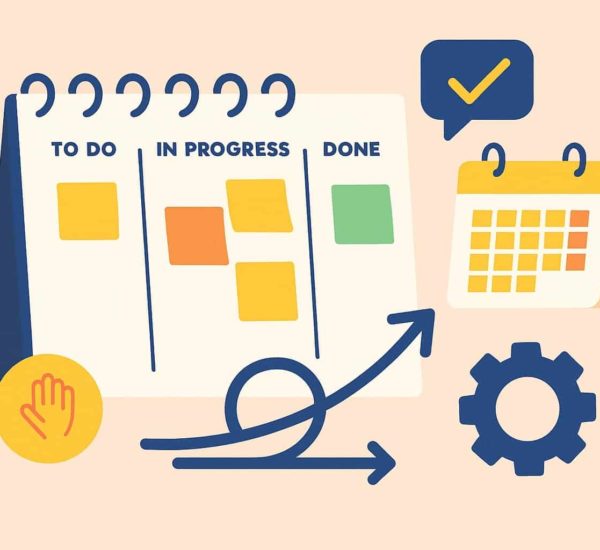The perfect employee work schedule is something that every manager looks forward to having. Creating the right schedule for your employees can be a huge challenge. Even after you’ve created the perfect schedule for your employees, chances are you’ll need to make changes in it now and then. Plus, after you spend hours on it, you’ll have to do it all over again at the end of the week.
Fortunately, technology has significantly improved the entire process. Though staff scheduling is easier than ever, it still takes thoughtful consideration. The good news however is that building a schedule isn’t as difficult.
In this article, we talk about how to make a schedule for your employees that works effectively.
What Is an Effective Employee Schedule?
Effective staff scheduling requires several steps to be followed. A good employee schedule keeps in mind several important factors which are as follows:
Focuses on Employee Availability
One thing a good employee schedule takes care of is that it focuses on employee availability. Of course, managers should also consider the availability of their staff and mustn’t enforce the schedule on their employees. Another benefit of doing this is that you will need to make fewer changes to it. Otherwise, you will end up changing the schedule to fit the availability of the employees over and over again.
A good employee schedule isn’t complex. It should be easily readable and shareable with the team.
Should be Proof Read
Once you make the employee schedule, make sure it is free of errors and the labels are correct. It will save you the trouble of confusing the time slots and the names of your employees.
Should Keep in Mind the Local Laws
A good employee schedule is compliant with the local laws. Every state and country has different local labor laws. Make sure your schedule is legally valid and not in violation. Otherwise, it can lead to heavy fines.
How To Make A Schedule For Employees?
Let’s now see some tips and tricks on how to make a schedule for employees that works.
Dig Deeper in Your Business
To make a schedule for employees, the first and foremost step is to know your business in the bones. You may think it’s your business what else there is to learn more about it. That’s however not entirely true. Digging deeper into your work will help you know what kind of schedule you need to build for your employees to work.
Get to know how your business works. Know how much time will each task require and also be sure of what times you will need the most employees at the workplace to work. Next, build the schedule keeping in mind your business. Another you need to keep in your mind is whether most of your employees work part-time or full-time.
For instance, if you run a restaurant, you will need to schedule your employees for times when the restaurant is crowded. For such a scenario, full-time workers will be preferable over part-time workers.
Lastly, also make sure to not schedule an employee outside of what is allowed by the company policy or state scheduling laws.
Know Your Employees
Building a strong schedule requires that you balance the needs of both your team and your business. A good employee schedule benefits, not just the organization and you but is also helpful and flexible for your team. The second step to creating the employee schedule is to know your team. To create a schedule that makes both parties happy, you’ll need to see what their skills and work preferences are.
Next, know what time your employees would rather work. For instance, working morning hours or the evening one is a matter of choice. Not many organizations take into account this preference but if they do it will lead to happy and healthy work culture. Next, establish what your team needs to do and build the schedule. Some questions you can ask your employees are:
- Do you prefer morning, noon, or evening shifts?
- Are there any vacations you’ve planned?
- Do you have any overtime restrictions?
- What are your strengths and weaknesses?
- Do you have days you’d like off as a holiday?
- Do you want to work full or part-time?
Know How to Communicate
The whole purpose of employee scheduling will fall flat on its face if your employees fail to understand it and the reason behind it. Not only this, but they are likely to end up feeling resentful. The next important step is to communicate to your employees the entire schedule in meetings etc. Your team will work together best if you have an effective system for communicating with each other. Make sure your team knows what is going on so they prepare beforehand for each shift.
Give your employees a heads up on their schedule and things like why they are working a day extra for instance. In addition always give them the aerial view of why their schedule is built this way, what work they have to do and why they have to do it and how this benefits the organization.
Get the Schedule Out Quickly
Most of your employees will be planning something or will have personal commitments. You need to get the employee schedule as early as possible in order for your employees to reserve time accordingly. Doing so will help your employees:
- Schedule or even reschedule their personal commitments
- Prepare for the next week
- Find a substitute if they arent available
- Talk to you if they want to make adjustments to their current schedule
Keep the Schedule Flexible
Your employee scheduling process should be flexible especially if it is multi-location employee scheduling. You mustn’t enforce the schedule onto your employees but give them the liberty of asking to make adjustments to it. If you notice a good employee struggling to work on the schedule you’ve created, you may need to change it. Make it easy for employees to ask for changes in the employee schedule.
See Who Wants to Work Extra Shifts
Next, instead of putting employees on a schedule that requires working extra shifts on some days, try finding out employees who would rather do it happily. Most of your employees will have complex life and will not have the time to work extra hours. To tackle this issue, look for employees who are willing to work extra shifts and those who are qualified for it.
The AttendanceBot app helps you plan employee schedules and alert them of the upcoming shifts on your team collaboration platform.
Make Your Your Employees Have Access to Their Schedules
Even if your organization is remote or on-site, you may want to make the employee schedule accessible to them online. If it requires your employees to call in every day and ask for their schedule or ask someone else to go check their schedules for them, you’re wasting your employees’ time. To avoid this, make sure there’s a platform where employees can look at their weekly schedules from anywhere they are.
If you’re using Excel, you can distribute it via email or provide cloud access. Additionally, if there are any last-minute changes to the schedule, alert your employees beforehand. If you’re using scheduling software, publish the schedule on the platform, o that the staff instantly receives a notification on their mobile device of the new schedule and of any future changes
AttendanceBot takes care of that like a pro! Your team members can look up and be reminded of their upcoming shifts using just simple messages.
Identify the Schedule Abuse
Find out what’s causing the schedule abuse. This can be on part of your employees and even you or your schedule manager. This is what a typical employee schedule abuse may look like:
- Requesting Friday or Monday Schedule changes constantly
- Asking to leave work early several, days a week
- Looking for substitutes for work that is overburdening
- Not showing up for work even if you ask them to
- Asking to change the schedule with no legitimate reason
- Coming up with the same excuses that keep them from working their scheduled shifts
If this is happening, constantly you should be able to identify it and rectify it immediately. This may require you to talk to the employee in private and ask them what could be causing this. If this is something about their personal life you can always offer help.
Be Innovative
Although you put in all your efforts to make the employee schedule as mistake-free as possible, there still can be issues. When that happens make sure you’re not afraid to try new scheduling solutions. For instance, you may have employees who are interested in working a split-shift, which can help to address coverage issues.

Predict Future Activity Levels
Using your current weekly performance, you can always predict the future activity levels of your employees. Thus can be daily weekly monthly and also yearly. For instance, if your data tells you that your company makes the most sales during the second quarter, it is likely the same pattern will follow next year.
You can make the necessary changes and adjustments according to what the data predicts. With this data, you can get a clearer understanding of the amount of staff you need. This means scheduling your employees in accordance so that you’re always a step ahead.
Be Prepared For Changes
If recent world events have shown us anything, it’s that everything can change in seconds. It is true for both your business and your employees. There can be all kinds of emergencies in the world that your employees can go through, this means you should always make your employee schedule flexible in case that happens.
Similarly, at times there are natural emergencies that will require you to act as quickly as possible for instance the pandemic. You may want to schedule your employees keeping things like homeschooling in mind, to deal with the pandemic-related changes.
Establish a Team Communication Strategy
Even if you carefully prepare your employee schedule, it will still require some final and last-minute decisions. If you want to make sure it doesn’t end up with more problems, the best thing to do is to have an effective team communication strategy for shift trades and changes.
Review Your Employee Schedule Regularly
When creating a staff schedule, it can be tempting to copy the schedule from the week before, but this means that nothing has changed. Whereas the truth is that your business should always be changing.
Your work doesn’t stop after you’ve created your schedule. You need to regularly analyze your schedule and scheduling processes to identify problems and find solutions to improve. To avoid this, make sure you regularly review your employee schedule and make the necessary changes to it for the next week. Also, make sure it reflects the latest information about your work and your employees’ needs.
Employee Scheduling Made Easy
That said if you’re looking for the right employee scheduling software that takes care of all your scheduling needs, try AttendanceBot. It is one tool to manage your workforce that offers the following:
- You can manage temporary workers, shift workers, full-time employees, or a mix of all of them in one go.
- It offers streamlined team communication, perfect for communicating all kinds of last-minute changes,
- Keeps the entire team alerted whenever their shift starts or ends.
- Whether it is weekly, fortnightly, or monthly employee shift planning, it helps you do it easily.
- You can also Manage availability and make requests for shift change from right inside Slack or MS Teams.
Wrapping Up
Scheduling problems lead to unhappy employees and, ultimately, unhappy customers. As a manager, you wouldn’t want any of these to happen. When it comes to scheduling, flexibility, communication, and understanding are the key to keeping everyone happy. You must always strike a balance between fairness and consistency in order for things to work smoothly.







